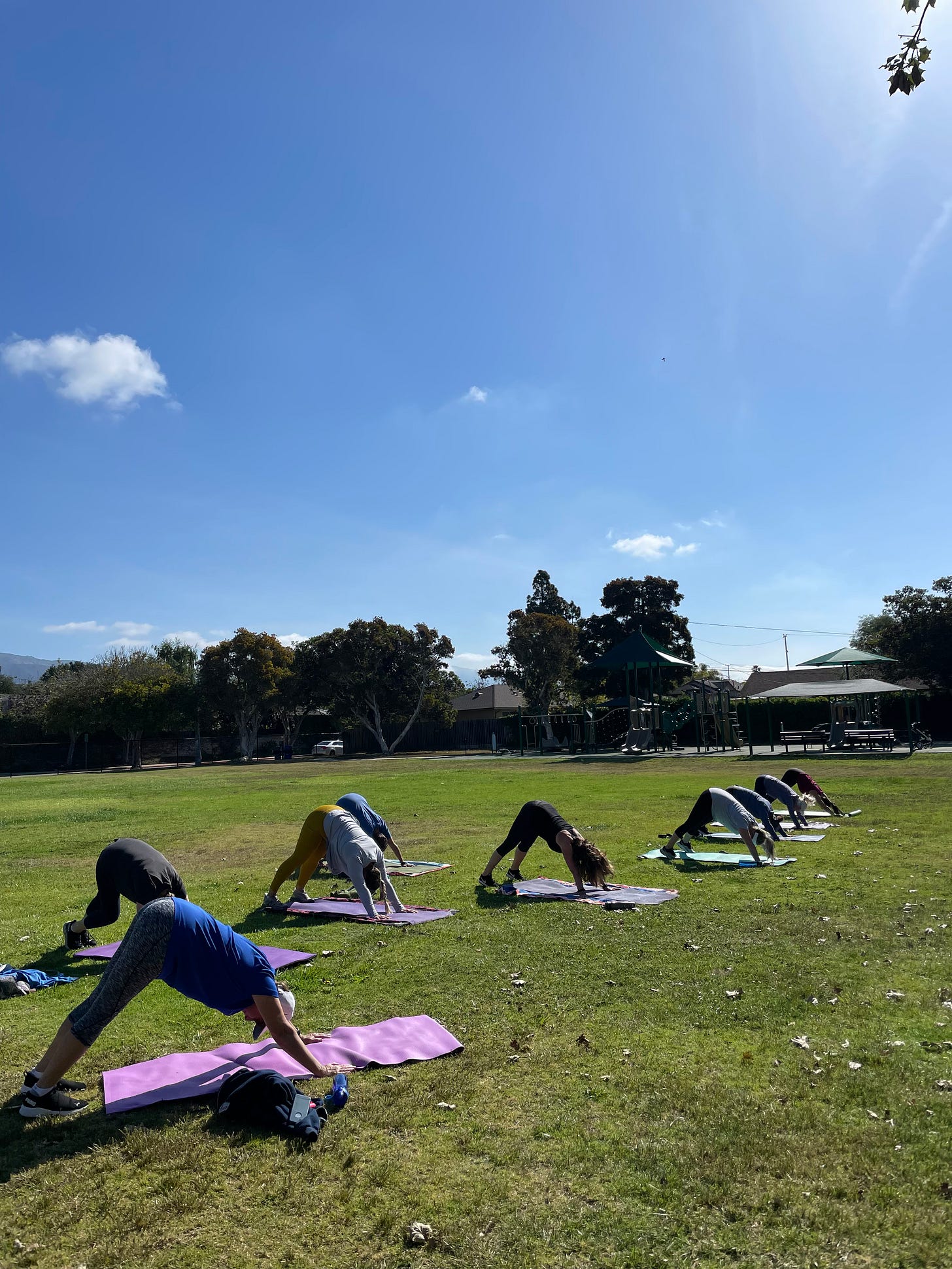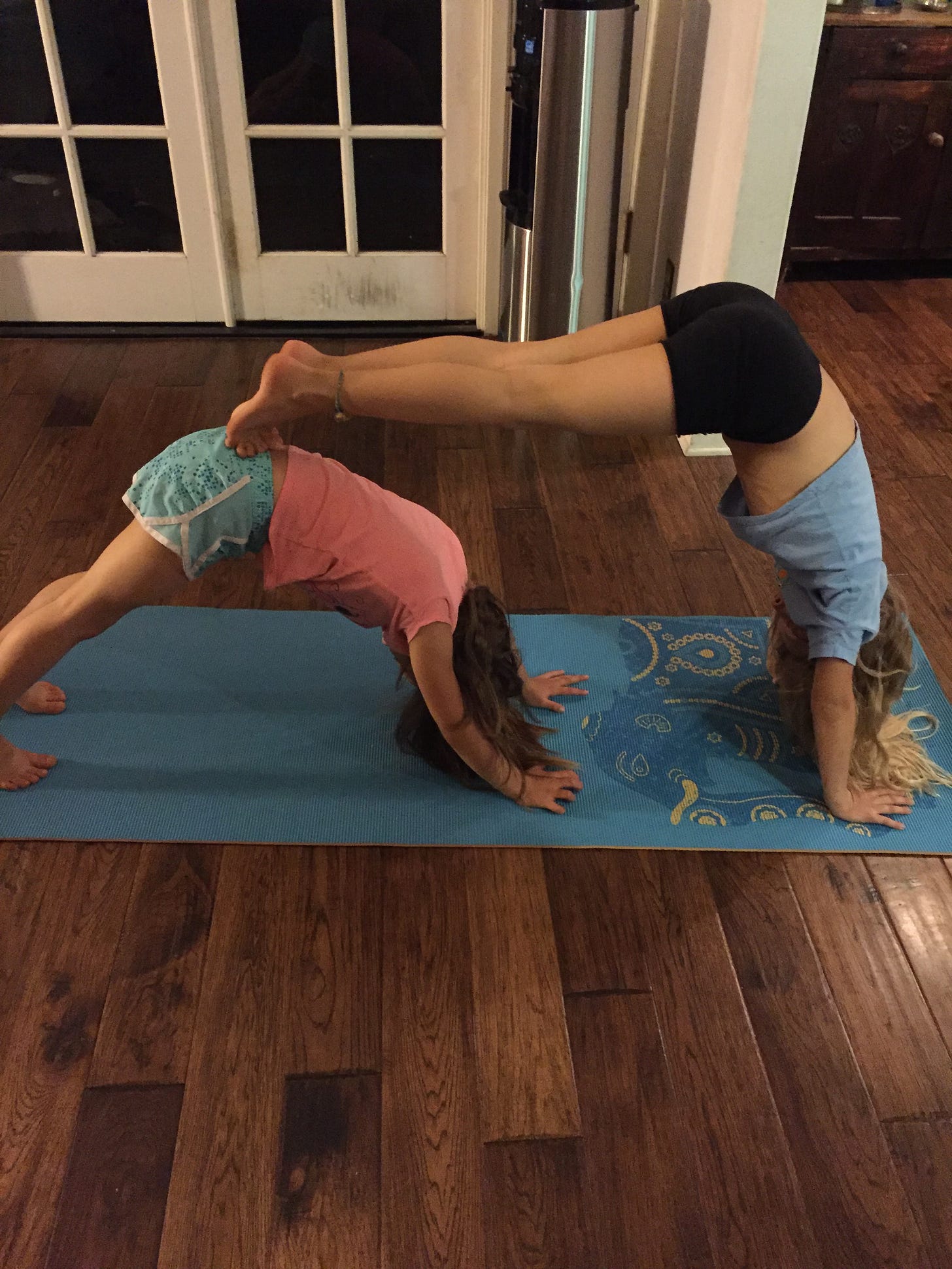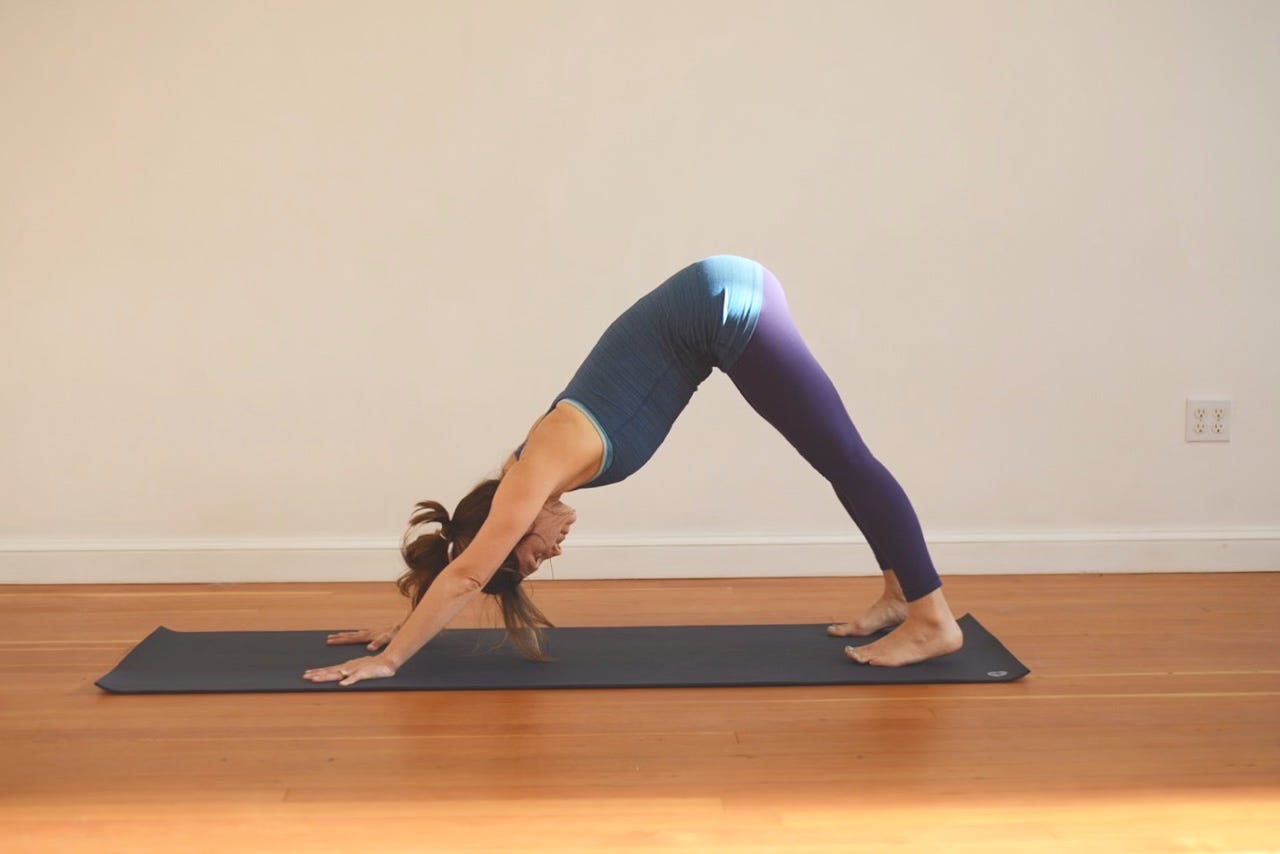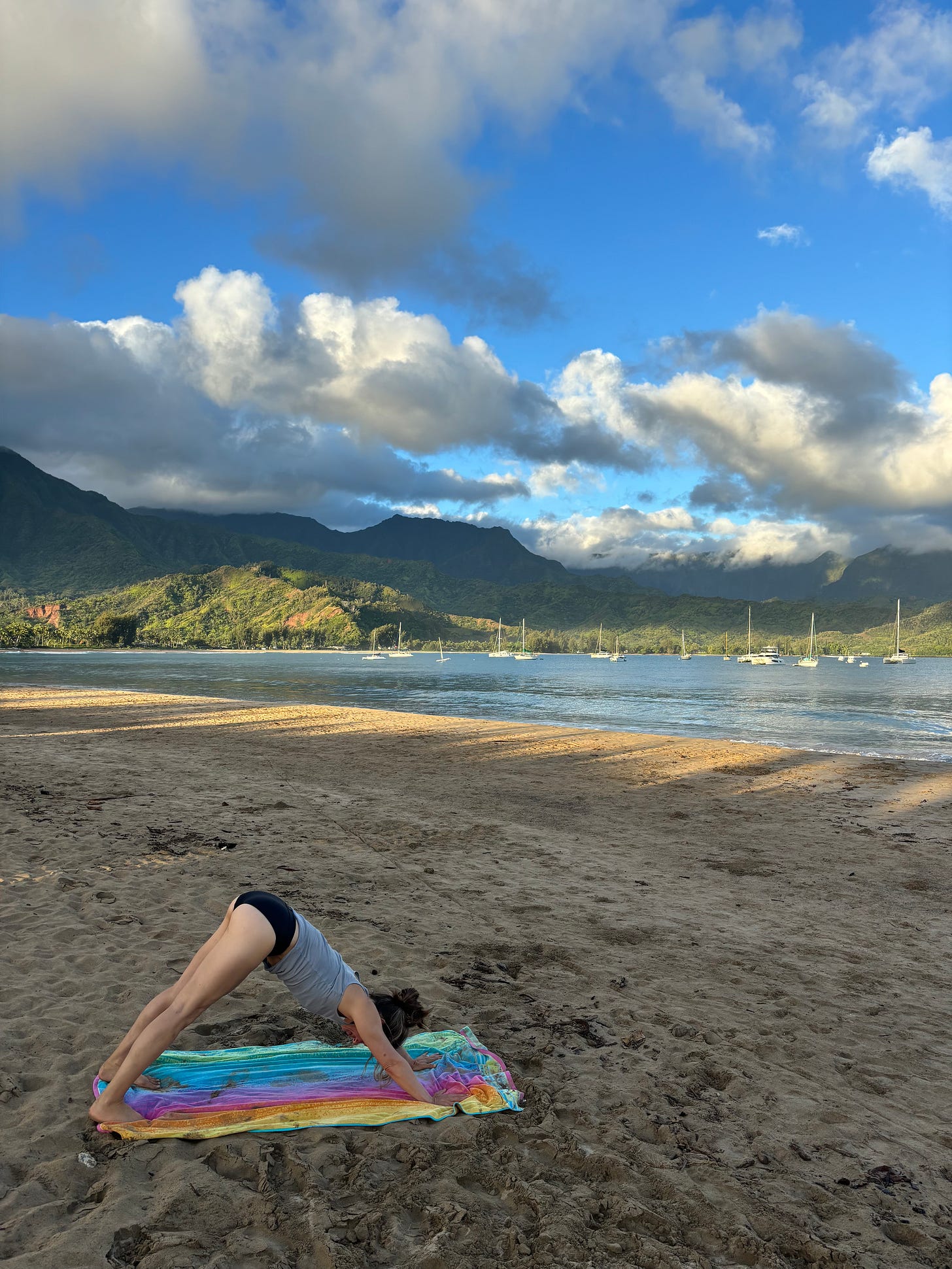Good Down Dog
The power of a single yoga pose
When I first began as a yoga student some 30 years ago, I saw a flyer for a yoga workshop on the pose Down Dog. Back then I couldn’t understand how a whole workshop could be devoted to just one singular pose. Now I get it. Down Dog seems like a simple and unassuming way to position your body, but when you do this posture correctly, you soon find there’s much more to it than meets the eye.
A wonderful thing about yoga is that it amasses the expression and life experience of its practitioner. In other words, my down dog won’t look or feel like yours, and yours will look and feel different than the person next to you. Still, there are cues for doing the pose correctly, so that the energy flows in the right directions and the benefits are received.
Down Dog is a posterior pose. Meaning, the back side of the body is being lengthened, stretched, and invigorated. In the practice of yoga, Down Dog is often coupled with Up Dog or Cobra - both of which stretch the front side of the body. (We move laterally and rotationally in yoga as well which is why yoga proves to feel so amazing! It’s a full body experience!)
Let’s break down the pose. Starting at the hands, Down Dog is a great wrist strengthener. I have never had issues with my wrists - even after a quarter century of handstands, and sometimes I wonder if that is because I have practiced tens of thousands of Down Dogs over the years! The thing to remember in this pose is to push away from the ground with the hands instead of sinking into the wrists. By pushing the floor away, we activate the little muscles in the hands, wrists and arms.
I love what Down Dog does for the shoulders and neck. Think about it: at the computer, texting, scrolling, driving, eating, picking up kids or objects… all these things cause the shoulders to be inwardly rotated. Stress, sadness and fear also cause the shoulders to position themselves inwardly (imagine the posture of a scared or depressed human.) When we look at the photos above of Down Dog, we can see that shoulder rotation is encouraged to externalize, thus opening up the back and chest.
In the mid back, we have a muscle caused muscle called Latissimus Dorsi which fans from both sides of the low back to both shoulder blades. Down Dog does a great job of giving this large but often neglected muscle a good stretch along with our other mid-back muscles.
Moving towards the lower back we can see that Down Dog creates a situation in which low back pressure may be alleviated. I think we can all agree this would be beneficial based on how many low back issues there are in the world! Low back compression and pain is so common that I would say at least 50% of my clients have come in suffering from it. Down Dog seeks to lengthen out the spine and help relieve low back pain and pressure.
As far as the legs go, there is hardly a better stretch for the hamstrings, calves or achilles. When one or all of these areas are tight, the whole body can go off kilter! I would say at least 50% of my clients are working on gaining more flexibility in their posterior legs. Issues like shin splints or achilles tendonitis can occur in part from being overly tight in these areas. Just as we want to press away with the hands in Down Dog, we want to draw down with the heels. If you are very tight through the back side of your legs, this will prove difficult but don’t worry- you can bend your knees as needed.
Lastly, Down Dog can actually be considered a partial inversion pose, which means we are upside down! Inversions in yoga are known to improve circulation and increase blood flow to the brain. Inversions also tend to have a calming effect, literally and figuratively helping us see things from a different perspective.
I love Down Dog because it resets me, revitalizes me and takes away my little aches and pains. I think you will have the same experience if you give this amazing asana some time to work its magic!
Down Dog Quick Tips:
You should have about a legs length between your hands and feet
Hands are shoulder distance, middle finger forward, all fingers fanned, and push the floor away.
Lift out of the shoulders and broaden the back. Try to “wrap” your shoulder blades laterally outwards instead of sinking inwards towards your spine.
Lift and spread your sitting bones up and back towards the space behind you. Draw your thigh bones back and away from your hands.
Feet hip distance and do not splay your toes outward. Traditionally we are told to be ever-so-slightly pigeon-toed.
Draw your heels downward, even if you have to bend your knees slightly to do so.
If your wrists hurt, consider using a yoga wedge under your hands or doing this pose on your forearms.
By the way, do you get something out go this publication? It’s free for all, but if you feel like donating a few bucks to the time it takes for me to share, it is always deeply appreciated. Just click on the button below! xoxoxo






Thanks for all these great tips and the happy down dog pictures (and the cute title of the post) What a great way to start the day! 💕